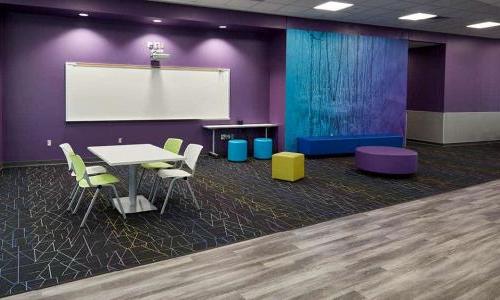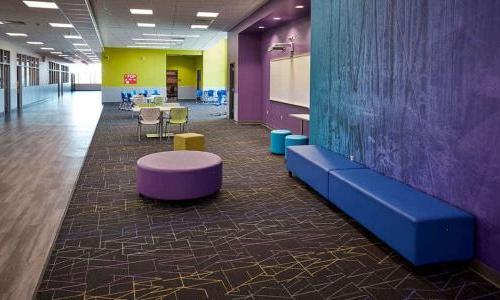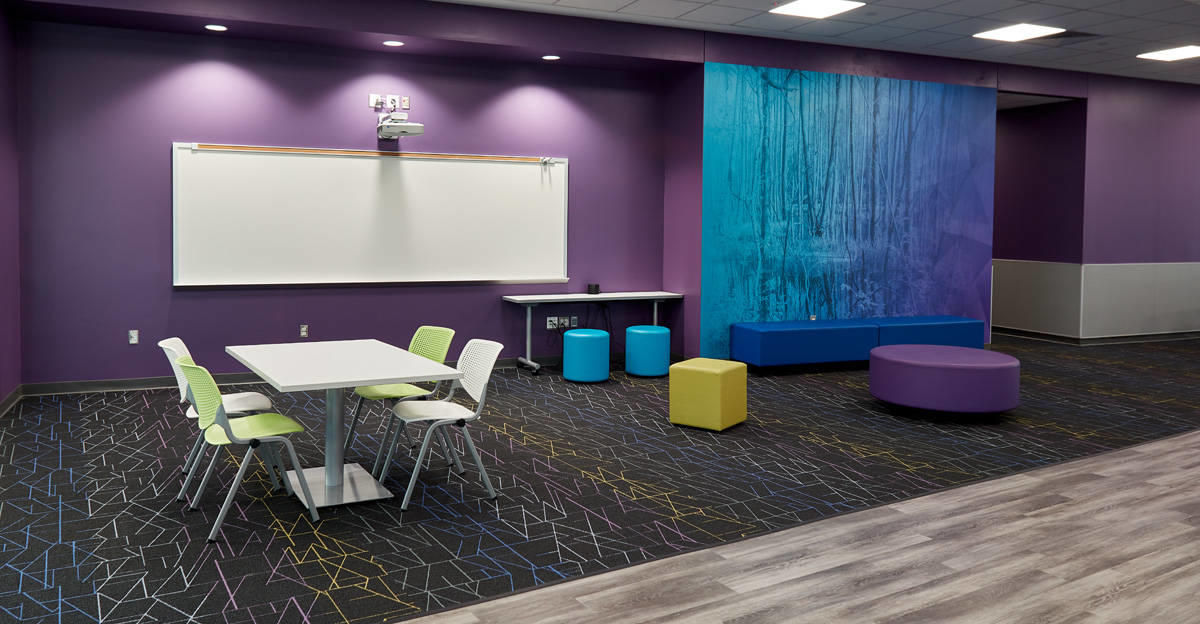Hallways, foyers, and other school common areas are often underutilized spaces that hold great potential for extending student learning. These spaces can serve multiple educational purposes if equipped with the right furniture and tools.
For instance, students and teachers can use them as breakout spaces or extensions of the classroom, where groups of students might retreat to work on projects during class time. Students could also use these spaces for studying, tutoring, socializing, or independent reading—the possibilities are nearly limitless.
Because these are often high-trafficked areas, choose durable furniture with easily washable fabrics when furnishing them. To maximize the utility of these spaces, make sure you provide a variety of seating styles—or use modular furniture that students can pull apart to sit by themselves or move together to work in pairs or small groups.
Here are some creative ways schools have outfitted their common areas to support extended and continuous student learning opportunities.
Kranz Junior High School
From its classrooms to its common areas, Eugene Kranz Junior High School in Dickinson, Texas, is designed with both function and appeal in mind. Every element of the school’s design serves an intentional and instructional purpose.
For instance, a large, open common area between classrooms is a shared space for collaboration. The space includes a large screen interactive projector and tables for a comfortable workspace. The inclusion of soft seating options makes it an inviting place to congregate and share ideas.


Shelby High School
When Ohio’s Shelby School District set out to construct a new high school, officials wanted to create the most visionary, advanced learning spaces possible. One notable departure from traditional practices is the school’s “double-wide” hallways, facilitating student collaboration, study, socialization, and continuous learning.
For example, small groups can now meet in the hall where they don’t disturb their peers in the main classroom. The teacher can still supervise these groups thanks to the liberal use of glass throughout the school. Not only does this afford better views, but the glass also serves as a more versatile dry-erase surface without cluttering walls with chalkboards or whiteboards.

The hallways and other learning spaces are outfitted with modern furniture and highly adaptable equipment. Every product helps students and teachers change from individual to group learning at a moment’s notice, with mobile seating, carpeting, and whiteboards.
“Every aspect and minuscule detail of Shelby High has come together to foster an environment of collaborative, 21st-century learning,” said Superintendent Tim Tarvin. “Faculty, students, and parents are ecstatic about the school’s unique design.”
To learn more about creating a continuous learning culture through smart learning space design, download our free guide: “Learning Beyond the Classroom: How to Make Every Space a Learning Space.”






Leave a Reply